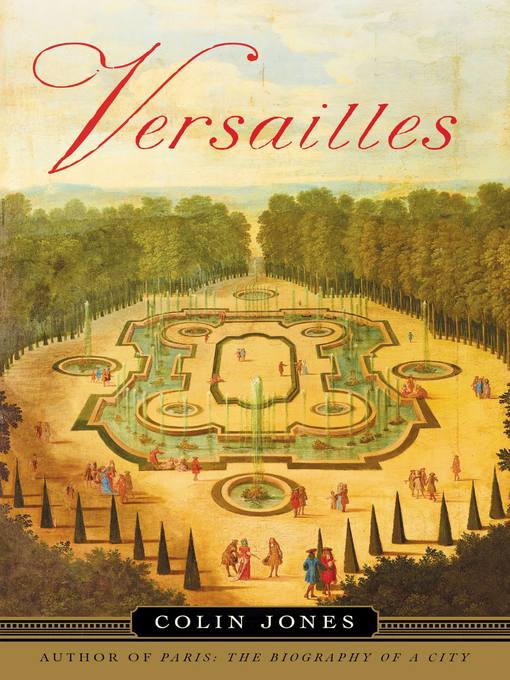
Versailles
کتاب های مرتبط
- اطلاعات
- نقد و بررسی
- دیدگاه کاربران
نقد و بررسی

August 27, 2018
Historian Jones (The Smile Revolution in Eighteenth-Century Paris) spins a captivating narrative about a town and building with humble beginnings that became inextricably linked with the sociopolitical trajectory of France. “Since its inception, the Versailles project had been centered on the person of the king; it depended on his playing the role set out by Louis XIV,” Jones writes. But from their origins as a hunting lodge near a village windmill in 1623, building and settlement proved as adaptable as the political fates of France. Social mores and favor flowed from Versailles during the Bourbon monarchy (though different monarchs were more and less pleased about this) until the deaths of Louis XVI and Marie Antoinette during the French Revolution. Afterwards, Versailles became a chameleon, everything from decrepit money pit to national monument and the museum and tourist destination it is today. Particularly fascinating is the fact that each change in function was accompanied by a change in form and fortune for the town. Jones’s tale requires the reader to have some knowledge of French history, but for history buffs and Francophiles this is an engaging, accessible look at the layers behind one of the most well-known places in France.

September 1, 2018
Drawing on a burgeoning of recent research and scholarship, as well as memoirs and chronicles, Jones (History/Queen Mary Univ. and Univ. of Chicago; The Smile Revolution in Eighteenth Century Paris, 2014, etc.) creates an adroit overview of the transformation of Versailles from a rustic hunting lodge to France's most sumptuous palace.In the 1610s, the "shy, ungregarious and mildly misogynistic" Louis XIII, embroiled in religious conflicts, urban upheaval, and war, retreated to the unremarkable village of Versailles, where he surrounded himself with fellow hunters. Although he expanded his lodge a bit over the years until it resembled a country house, it was his son, Louis XIV, who turned the residence into a palace, relocating his court and government there. Dependent on fluctuating funds from the royal treasury, Louis devoted himself to micromanaging extensive renovation, expanding, modernizing (including bathrooms and portable porcelain stoves) and decorating, choosing as his personal motif the sun, "giver of life and centre of the universe." His focus went beyond the main house to its sweeping gardens and to a château--"a more relaxed retreat for him and a select group of his closest courtiers"--five miles away, which became known as the Grand Trianon. For more than 50 years, Jones reports, "Versailles was probably the biggest building site in Europe." It was also a site teeming with people: around 3,000 who lodged in the palace, several additional thousands who came for the day or lodged elsewhere, and tens of thousands of servants who resided in the town. The author recounts the fate of Versailles under Louis XIV's heirs, who preferred glittering cultural life in Paris, and after the French Revolution, when Versailles was perceived as a glorification of the despised monarchy. Every successive regime--monarchy, empire, and republic--redefined the meaning, use, and relevance of Versailles. Private philanthropy and public support for France's national heritage has ensured that Versailles endures as a "world-historical site of memory" and repository of history, art, and culture.A brisk and richly detailed history of a significant place.
COPYRIGHT(2018) Kirkus Reviews, ALL RIGHTS RESERVED.

November 15, 2018
Jones (history, Queen Mary Univ.; Paris: A Biography of a City) examines one of world's the most famous palaces: Versailles. On the remote site of Louis XIII's favored rustic hunting lodge, Louis XIV conceived of a grand setting for his own greatness. Versailles was his passion; its buildings, grounds, and furnishing constantly evolving during his lifetime. It was the center of his court and home to all who wished to be under the gaze of the Sun King. The difficulties of sustaining its infrastructure and population under Louis XIV and his Bourbon successors are explained in fascinating detail. Versailles eventually fell into disrepair owing to monetary and political stresses as the monarchy declined. In the French Republic, the status of the palace as a symbol of a reviled monarchy brought close encounters with its destruction. The palace's late 19th-and 20th-century renaissance as a touchstone of French culture, and its recognition as a World Heritage site, reveals how monuments bring history vividly to life. Primary sources and recent research effectively sketch Versailles's transformation over the centuries. VERDICT Francophiles, architecture buffs, monarchists, and history readers will appreciate this compact, comprehensive work.--Laurie Unger Skinner, Highland Park P.L., IL
Copyright 2018 Library Journal, LLC Used with permission.




















![Design Like You Give a Damn [2]](https://dl.bookem.ir/thumbnails/150/ISBN13/9781613122860.jpg)




دیدگاه کاربران